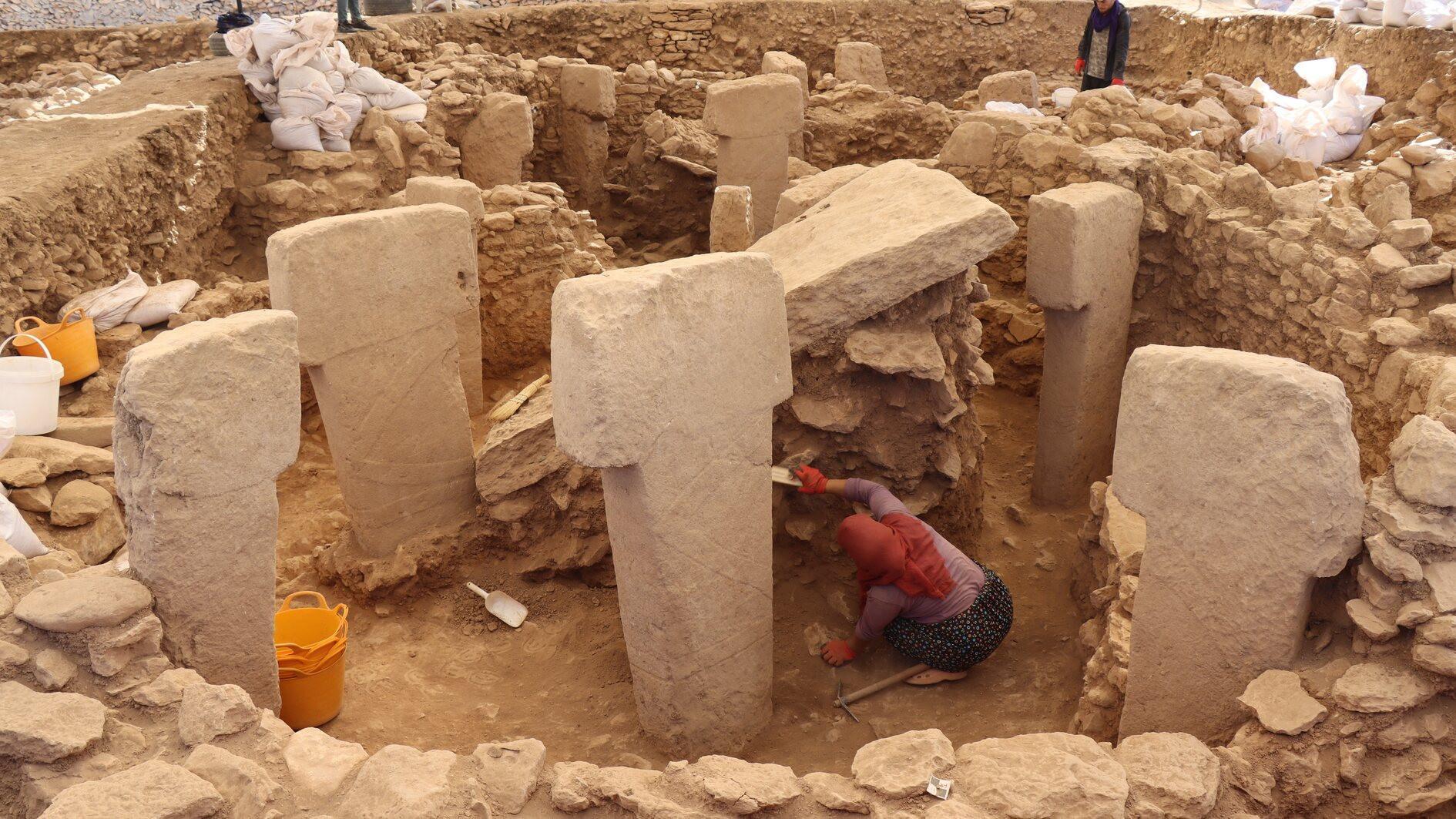
Excavations carried out in the Sayburç settlement in the southeastern province of Şanlıurfa, under the Culture and Tourism Ministry’s “Taş Tepeler Project,” have uncovered more than 50 structures dating back to the Neolithic period, offering fresh insight into the daily and ritual life of one of the world’s earliest settled communities.
The digs, launched in 2021 under the direction of Eylem Özdoğan of Istanbul University’s Department of Prehistoric Archaeology, seek to shed light on the settlement culture associated with Göbeklitepe. Among the finds are circular and rectangular buildings containing hearths, platforms, benches and work areas, alongside T-shaped monoliths characteristic of the period.
Özdoğan said that excavations are concentrated in the southern sector of the site, where the architectural remains appear more modest.
“At Sayburç, we observed both communal public buildings and residential houses side by side. This provides us with detailed information about everyday life as well as the activities that took place in special structures,” she said.
Evidence from the dwellings, she added, reveals that food preparation and other household tasks were carried out within the homes, while the larger public buildings showed distinctive arrangements.
So far, over 50 buildings have been identified, most of them residential, with only a small number classified as special-purpose public structures.
“We find hearths, platforms, benches and work areas in the houses, pointing to traces of daily life,” Özdoğan explained.
“In communal buildings, however, the interior design differs. The number of T-shaped monoliths and the arrangement of benches set them apart from houses. Typically, one or two special structures are surrounded by clusters of homes. Up to now, five such public buildings have been identified.”
Importantly, the same monolith pillars appear in both domestic and public contexts. “In houses, there is usually a single stone, whereas in public buildings, stones are arranged with one or two placed prominently in the center,” she noted.
According to Özdoğan, Sayburç represents a crucial settlement documenting transitions within the Neolithic.
“About 12,600 years ago, the region saw intense settlement activity, with many sites established, some long-lasting and others short-lived. Karahantepe and Göbeklitepe are among the best known,” Özdoğan said.
“Sayburç, however, was occupied continuously for around 300 years. Here we can trace the shift from round-plan buildings to rectangular ones, offering valuable evidence for understanding changes in construction techniques and technology.”